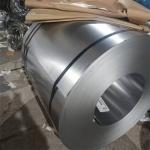GH5188 Alloy is a high-performance nickel-based superalloy
specifically engineered for demanding applications where extreme
conditions are prevalent. This alloy is characterized by its
superior high-temperature strength, excellent resistance to
oxidation and corrosion, and robust mechanical properties.
Key Features:
- Composition: The alloy comprises nickel (Ni) as the base element, along with
chromium (Cr), cobalt (Co), molybdenum (Mo), tungsten (W), titanium
(Ti), and aluminum (Al). These elements contribute to its
exceptional hardness and stability.
- Temperature Resistance: GH5188 maintains its mechanical integrity and performance up to
980°C (1800°F), making it suitable for high-temperature
environments.
- Mechanical Properties: It offers outstanding tensile and yield strength, ensuring
reliability and durability under extreme conditions. The alloy's
ability to withstand stress and thermal cycling makes it ideal for
critical applications.
- Corrosion and Oxidation Resistance: The alloy's composition provides excellent resistance to
oxidation and corrosion, even in harsh environments, prolonging the
lifespan of components.
- Applications: Commonly used in aerospace components, turbine blades, exhaust
systems, and other high-stress parts requiring superior performance
and longevity.
- Heat Treatment: GH5188 can be heat-treated to achieve optimal mechanical
properties, offering flexibility in processing and manufacturing.
GH5188 Alloy's combination of high strength, thermal stability, and
resistance to harsh environments ensures it meets the stringent
requirements of advanced industrial and aerospace applications.
Here’s a typical composition table for GH5188 Alloy:
| Element | Composition (%) |
|---|
| Nickel (Ni) | Balance |
| Chromium (Cr) | 19.0 - 21.0 |
| Cobalt (Co) | 10.0 - 12.0 |
| Molybdenum (Mo) | 3.5 - 4.5 |
| Tungsten (W) | 3.0 - 4.0 |
| Titanium (Ti) | 2.0 - 2.5 |
| Aluminum (Al) | 1.5 - 2.0 |
| Carbon (C) | ≤ 0.08 |
| Boron (B) | ≤ 0.01 |
| Silicon (Si) | ≤ 0.50 |
| Manganese (Mn) | ≤ 0.50 |
These values are approximate and can vary based on the specific
production standards and requirements.








